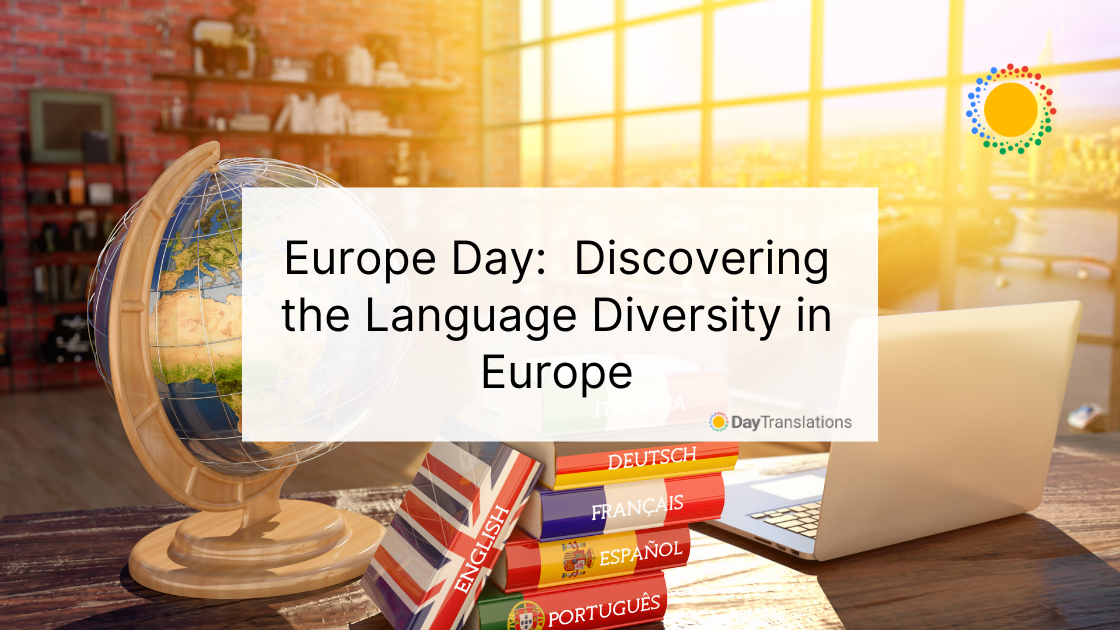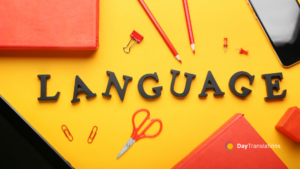Europe is the origin of some of the greatest civilizations and cultures of the world. It is diverse culturally and linguistically. But some of its mysteries still await discovery. One would think that Europe is a vast continent. However, its land area is just about 4,000,000 square miles or 10,359,952.44 square kilometers in size, making it the world’s second smallest continent next to Australia. But do not be fooled by its size, as it is ranked third most populous continent in the world after Asia and Africa.
Interestingly, Europe has the world’s largest country, Russia, which makes up about 40% of the land area of Europe. It is also home to the smallest country in the world, Vatican City. Likewise, it is the location of the largest city, the city of Istanbul. Some of the most influential civilizations and cultures in the world originate from Europe, while some of the most important periods in history took place in Europe – the Industrial Revolution and the Renaissance.
About 50 countries comprise the continent of Europe and each of the country has its own distinct language, although some have two or three national languages.
In the borders of most of the countries, the languages can overlap, which lead to interchangeable use, meaning that they are able to speak and understand the languages spoken in the countries near them.
Taking Chinese and English languages off the equation, Europe is home to the most popular languages in the world, such as French, Russian, German, Spanish, Portuguese and several others.
What’s in a name?
The origin of the name Europe is still uncertain and several theories were given by different groups. Some think that it came from Europa, an abducted Phoenician princess and one of the wives of the mythical Greek God, Zeus. She was the mother of Minos. It could also come from ”eurus,” a Greek word that translates to broad or wide. Other people believed that it came from ”ereb,” which means sunset in Ancient Syrian. The same group thinks the term Asia also came from ”asu,” another Ancient Syrian word that means sunrise.
Linguistic diversity
As expected, the linguistic diversity in the continent means that Europe does not have a common language and while many Europeans learn other languages such as English, Latin, German, French or Spanish, these are their second tongues, rather than their first language.
However, the use of English in the European continent is on the rise, especially with the younger population. France, a country in Europe, which tries everything to protect the French language, the increasing use of English has influenced, albeit unwanted, the culture and language of the French.
Considering its language diversity, the European Union (EU), which has 27 member countries, recognizes 24 languages as its official languages. However, the most used languages in the EU are French, German and English, which lead the list. About 60 minority languages are spoken in the EU alone.
Speaking of languages, here’s an overview of the countries and the main and top secondary languages in each European country.
| Country | Language (Main) | Secondary Languages | EU Membership | |
| 1 | Albania | Albanian | Shqip-Gheg, Italian, Greek | |
| 2 | Andorra | Catalan | Portuguese, Castilian, French | |
| 3 | Austria | Slovene, German, Hungarian, Croatian | Yes | |
| 4 | Belarus | Russian, Belarusian | Yes | |
| 5 | Belgium | Dutch, French and German | ||
| 6 | Bosnia & Herzegovina | Serbian, Croatian, Bosnian | ||
| 7 | Bulgaria | Bulgarian | Turkish | Yes |
| 8 | Croatia | Croatian | Yes | |
| 9 | Cyprus | English, Turkish, Greek | Yes | |
| 10 | Czech Republic | Czech | Yes | |
| 11 | Denmark | Danish | Standard German | Yes |
| 12 | Estonia | Estonian | Finnish, Ukrainian, Russian | Yes |
| 13 | Faroe Islands | Danish, Faroese | ||
| 14 | Finland | Finnish, Swedish | Russian, Sami | Yes |
| 15 | France | French | Yes | |
| 16 | Germany | German | Yes | |
| 17 | Gibraltar | English | Spanish, Llanito | |
| 18 | Greece | Greek | Turkish | Yes |
| 19 | Greenland | Danish, Greenlandic Inuktitut | ||
| 20 | Hungary | Hungarian | Romanian, German | Yes |
| 21 | Iceland | Icelandic | German, English, Nordic languages | |
| 22 | Ireland | Irish, English | Yes | |
| 23 | Italy | Italian | Yes | |
| 24 | Latvia | Latvian | Russian, Lithuanian | Yes |
| 25 | Liechtenstein | German | ||
| 26 | Lithuania | Lithuanian | Russian, Polish | Yes |
| 27 | Luxembourg | Luxembourgish. German and French | Yes | |
| 28 | Rep. of Macedonia | Macedonian, Albanian | ||
| 29 | Malta | Maltese | English | Yes |
| 30 | Moldova | Moldovan | Gagauz, Russian | |
| 31 | Monaco | French | Italian, English and Monegasque | |
| 32 | Montenegro | Serbo-Croatian | ||
| 33 | Netherlands | Dutch, Frisian | Yes | |
| 34 | Norway | Norwegian | Finnish and Sami | |
| 35 | Poland | Polish | Yes | |
| 36 | Portugal | Portuguese | Yes | |
| 37 | Romania | Romanian | German, Hungarian | Yes |
| 38 | Russian Federation | Russian | ||
| 39 | San Marino | Italian | ||
| 40 | Serbia | Serbian, Albanian | ||
| 41 | Slovakia | Slovak | Hungarian | Yes |
| 42 | Slovenia | Slovenian | Yes | |
| 43 | Spain | Spanish (Castilian), Catalan, Galician, Basque | Yes | |
| 44 | Sweden | Swedish | Finnish and Sami | Yes |
| 45 | Switzerland | German, French, Italian, Romansch | ||
| 46 | Turkey | Turkish | Greek, Armenian, Arabic, Kurdish | |
| 47 | Ukraine | Ukrainian | ||
| 48 | United Kingdom | English | Gaelic Scottish, Welsh | |
| 49 | Vatican City State | Italian, Latin | French and other languages |
Reasons for the language diversity are many. There are many countries that comprise Europe and each one of them has its own history. It could be because of the native speakers, the number of translators in the continent and maybe because some of the languages are globally recognized. The latter is one of the reasons why many Europeans learned to speak different languages since they were young.
Yes, there are a number of languages spoken in Europe. However, only a few of them are popular and widely spoken. In the list below, the percentages indicate the number of speakers, based on the total population in Europe, which is around 742 million (2017).
- English. About 38% of the population speak English, which is not native to a large part of Europe, even after Brexit. However, because the language is globally important, it is spoken by a large section of the population. The wide use of English is due in part to the number of English-speaking immigrants and people who speak English as a second language.
- French. It is next to English in terms of the number of speakers, which represents 12% of the population. While the dominance of French as a global language has diminished through the years, it is still the second most spoken language in Europe mainly because about 80 million native speakers of the French language are still in the continent.
- German. Close at the heels of French at 11% is German. This can be attributed to Germany being Europe’s economic powerhouse. Many people in and out of the continent go to Europe for work. The variety of career opportunities caused native speakers of German to stay in the country.
- Spanish. About 7% of the population speak Spanish. Spain is a favorite tourist destination and there are plenty of opportunities in the hospitality industry. Many people from Latin America go to Spain because they can earn a higher salary and the language barrier is not a problem. Spanish is also a language that most Europeans learn.
- Russian. The language is used widely in the eastern part of Europe than in the western part. About 5% of the population speak Russian due to the sheer size of the country. However, many native speakers of Russian do not speak any other language other than their first language.
Aside from the numerous native languages spoken in the continent, several immigrant languages are also present in Europe, such as Chinese, Japanese, Korean, Hindi, Urdu and others. The immigrant population is widely spread, just like the languages.
For example, Chinese, Japanese and Korean speakers can be found in 27 different countries. Further, speakers of Arabic have communities in 26 countries. Immigrant communities are found in both large and small countries in Europe.
Europe Day
Incidentally, today May 9, is Europe Day. Also called Schuman Day, it is the foundation day of the European Union, which is also a commemoration of the Schuman Declaration of 1950. On this day, the member states proudly display the EU emblem or flag. In 1950, the proposal to create the European Coal and Steel Community was presented, which was the predecessor of the European Union.
The founding members of the Community were Germany, Luxembourg, France,Belgium, Italy, and the Netherlands. These countries agreed to pool their coal and steel resources to establish a common market for the community members by removing the export and import duties on these two vital products.
The core reasons are economic and political. Economic, since they need to rebuild after the destruction caused by WWII. Political, because by merging German and French economic interests, it would minimize the risk of future conflicts.
Today, various fun activities are held to celebrate the day. The EU headquarters are open to the public and they offer guided tours into their offices, including the Europa building and the European Parliament, where visitors can get a chance to be an interpreter for one hour and even interview an interpreter. There are also European food fairs where visitors can either have free or pre-paid food.
Celebrate the linguistic diversity of Europe and Europe Day. For document interpretation in any language used in the European Union or around Europe, call the native speakers of Day Translations, Inc. You are guaranteed that they will only deliver translation work that is 100% accurate. Our human translators are located around the world, so it is very convenient to get in touch with them anytime of the day. Likewise, we operate 24/7, all days of the year. Send us an email at Contact us or call us at 1-800-969-6853 for a quick quote.
Image Copyright:
coprid / 123RF Stock Photo
leonido / 123RF Stock Photo












